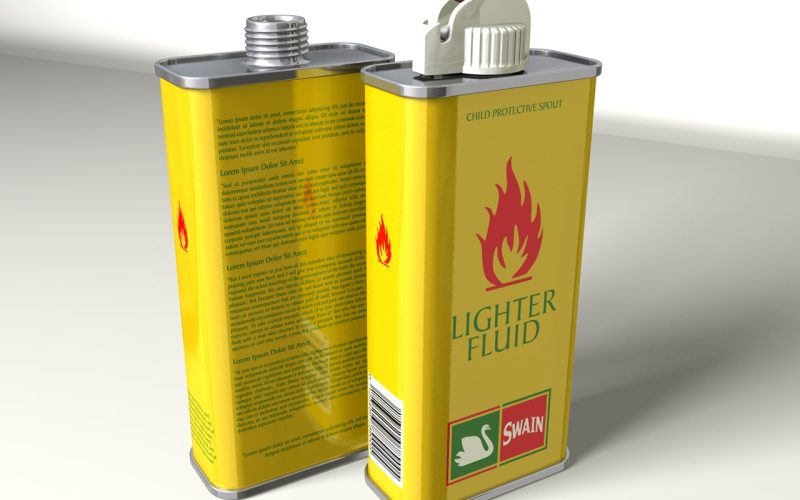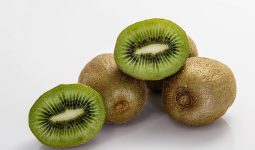The quickest way to get your charcoal grill lit and ready to cook your meat is with lighter fluid.
There are several best substitutes for lighter fluids to conveniently ignite your grill. These items are healthier and produce greater results than chemicals.
The drawback of fire starters is that they frequently smell and only heat a limited portion of the grill.
However, many solutions are available if you want something different from lighter fluids.
In our blog article, we’ll look at the best Substitutes for lighter fluids, such as the newspaper option, a cardboard egg crate, vodka, rubbing alcohol, cooking oil or animal fat, sugar, and even hot chips with a lot of seasoning.
Using these lighters to start a barbecue takes less than 15 minutes. So, come along!
Lighting a fire can be one of the most relaxing and enjoyable activities, but it can also be a hassle if you don’t have the right tools. One of the most important items you’ll need is a lighter fluid.
While this is typically the go-to option for most people, there are best Substitutes For lighter fluids that you can use.
Our blog post will explore the best substitutes for lighter fluids to keep your fire going without worrying about running out.
1. Newspaper
Newspaper is the first on our list of best Substitutes for lighter fluids. When starting a fire, it can be a safe and effective alternative to traditional lighter fluids.
Newspapers are a renewable resource, readily available, and easy to use. It can be used for kindling or as a tinder to help start a fire.
Newspaper is an excellent option for lighting campfires, grills, and fireplaces in a pinch.
Just crumble a few sheets of newspaper into balls and place them in the center of the fire pit.
Add a few sticks of wood around the balls and then light the newspaper with a match or long lighter.
The newspaper will ignite and burn quickly, providing enough heat to burn the sticks.
Using newspaper as an alternative to traditional lighter fluids provides the added benefit of reducing the risk of health hazards posed by lighter fluid fumes.
Additionally, using newspapers helps reduce pollution since the lighter fluid is often made from petroleum products, which release pollutants into the environment when burned.
For these reasons, newspapers are an excellent alternative to traditional lighter fluid.
2. High-proof Alcohol
High-proof alcohol is also on our list of best Substitutes For lighter fluids. This is because it has a high percentage of alcohol which helps to create a flame.
In addition, it is easy to find, as most liquor stores will carry it. As such, it is one of the most common options for those seeking an alternative to lighter fluids.
Remember that the higher the proof, the larger the flame will be, so be cautious when working with it.
High-proof alcohol can also be used to start charcoal grills. Since it has a high burning temperature, it helps the coals heat up faster and creates more heat.
Additionally, it is odorless and non-toxic, so it won’t leave behind a foul smell or fumes.
Use the right amount and follow safety protocols when working with high-proof alcohol, as it can easily catch fire.
3. Cardboard Egg Crate
Using a cardboard egg crate as the best Substitutes For lighter fluids is one of the oldest methods to start a fire.
This method works by filling the egg crate with wax and then setting it on top of kindling and paper in your fire pit or fireplace.
The cardboard will eventually catch fire and slowly burn, thus providing you with enough heat to ignite your logs and fuel.
This ignition method has the added advantage of being safer than most other methods since there is no risk of an uncontrolled fire.
However, you should be careful when using this method since the flames can easily consume the cardboard without fuel.
Make sure to use only natural wax, such as beeswax or paraffin wax, and ensure that it’s tightly packed into the egg crate so that it doesn’t move or fall out when it starts to heat up.
With proper use and safety precautions, cardboard egg crates can make for the best Substitutes For lighter fluids.
4. Rubbing Alcohol
Rubbing alcohol is one of the viable substitutes for lighter fluid when lighting up a charcoal grill or campfire.
It works similarly to lighter fluid in that it ignites quickly, making it an ideal choice for the impatient griller.
Rubbing alcohol is usually much easier to find than other substitutes and is often less expensive.
The downside to using rubbing alcohol instead of lighter fluid is that it burns very quickly and is extremely flammable, so you must be very careful when using it.
To use rubbing alcohol as the substitute for lighter fluid, pour some onto a cloth or cotton ball and place it directly onto the coals.
Then use a match or long-handled lighter to ignite the cloth, and the fire should quickly light.
Keep in mind that there may be an unpleasant smell when you use this method and that it will dissipate soon after the fire has been lit.
5. Doritos Hot Chips
Regarding the best Substitutes For lighter fluids, Doritos Hot Chips are an excellent substitute.
The chips are already very flammable, and when added to a barbecue or fire pit, they will easily ignite.
To use Doritos Hot Chips, place a few chips around the coals or wood and light them with a match or lighter.
The chips will light quickly and give off a steady flame that lasts several minutes.
The chips also provide a pleasant aroma while they burn. Be sure to watch the chips closely to ensure that they do not burn out too quickly.
When using Doritos Hot Chips as a replacement for lighter fluid, you may need to adjust the number of chips you use depending on the size of your fire pit.
You should also use caution when lighting the chips, as some Doritos varieties may burn more quickly than others.
For this reason, it is best to use a long-handled lighter or matches when lighting the chips.
These simple precautions allow you to enjoy a safe and efficient fire without using traditional lighter fluids.
6. Cooking Oil or Animal Fat
Cooking oil or animal fat can be a safe and natural alternative to lighter fluid.
They are relatively easy to source and have a higher flashpoint than traditional charcoal lighter fluid.
Cooking oil or animal fat works best when heated up in a small container, such as a skillet or pot, and then poured onto the charcoal.
The heat helps to ignite the charcoal quickly and evenly. As a bonus, the smoke from cooking oil or animal fat adds a unique flavor to cooked food.
When using either cooking oil or animal fat as the best Substitutes for lighter fluid, it’s important to remember that they should never be used directly on lit charcoal.
Doing so can create dangerous flare-ups and should always be avoided. Also, remember that cooking oil and animal fat are flammable, so proper safety precautions should always be taken when working with them.
7. Sugar
Sugar is a surprisingly effective alternative to lighter fluid. All you need to do is place a small amount of sugar in the bottom of your grill, light it with a match or a torch, and act as an accelerant to get your charcoal going.
The only disadvantage of this approach is that it produces a lot of smoke, so you should make sure to use it in an area with plenty of ventilation.
Additionally, the sugar can caramelize and give the food an unpleasant burnt-sugar flavor.
Although using sugar as a lighter fluid substitute is not ideal, it is better than using some potentially dangerous alternatives.
Sugar is not flammable like lighter fluid, so you don’t have to worry about the risk of an accidental fire or explosion.
And if you decide to use it, use only the smallest amount necessary for the job. That way, you can ensure that you get the most out of your fuel and avoid potential flavor problems.
8. Chimney Starter
It is simple to light charcoal using the chimney starter or fireplace starter. It is a cylindrical metal with an open end and a grid inside.
No matter how much charcoal is used, the process is the same. The Weber 7416 Rapidfire Chimney Starter is one of the most popular models of this type. It can store enough briquettes to fill a kettle grill up to 22-1/2 inches in diameter.
How to use?
At the base of your barbeque, set a bottle. Newspaper strips are then wrapped around and raised gradually.
Do not be afraid to make multiple turns with your newspaper. Remember to knot each newspaper strip with a 14-turn offset from the preceding strip.
Then, carefully push the charcoal against the bottle as you pour the charcoal around it.
9. Electric Starter
This item has many additional purposes in a home besides lighting a barbecue.
Because of its long neck, the strong electric arc it generates may also light kerosene lamps, wood stoves, grills, and candles while maintaining a safe distance.
Owners of charcoal grills claim that the Looft Lighter is one of the simplest to use. It is an electronic fire starter that doesn’t emit chemical odors and can light your briquettes in 60 seconds.
How to use?
Put the grill grate where your electric starter is on there. Place some charcoal there and all around it.
After that, heat the charcoal for the amount of time recommended by the manufacturer. Next, unplug the device and take the starter out of the briquette.
10. Firestarter Briquettes
Barbecue enthusiasts are on our list of best substitutes for lighter fluids. Firestarter briquettes cater to its needs.
In around 20 minutes, the lit charcoal briquettes will reach an appropriate temperature for grilling.
How to use?
To ignite the briquettes in the Weber ignition chimney, use fire-starter cubes. This is how it goes: Light three fire-starter cubes by placing them on the fireplace grate.
After that, set the metal handle of the filled ignition chimney on the edge of the grill.
Conclusion
Lighting a fire can be an enjoyable way to spend time outdoors, but it can also be hazardous when done incorrectly or with the wrong materials.
Using lighter fluids is one option for lighting a fire, but there are safer and more natural alternatives that are just as effective.
In our blog post, we have discussed some of the best substitutes for lighter fluids so that you can have a safe and successful fire-lighting experience.








